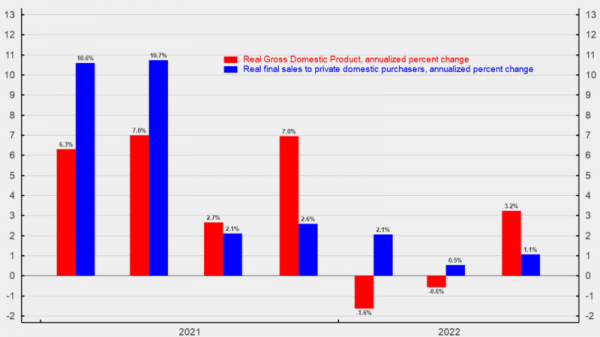

With gold prices surging to new all-time highs at the start of 2025, the top gold-producing countries are set to benefit significantly from a runaway bull market.
After gaining 30 percent in 2024, the market’s momentum continued in 2025. On January 31, it broke through the US$2,800 mark, and less than two weeks later on February 11, it broke above US$2,900.
The underlying conditions present in 2024 remain, including significant interest from central banks, falling interest rates and Russia’s ongoing invasion of Ukraine.
New events are adding more fuel to gold’s fire in 2025, most significantly Donald Trump’s return as president of the US. Since he took office, his aggressive trade tactics have sent ripples through the global economy and pushed investors to gold as they seek safe-haven assets.
As uncertainty grips the markets, rising gold prices will benefit gold producers and the countries they operate in. So, which countries produce the most gold?
1. China
Gold production: 380 metric tons
China was the world’s top gold mining country in 2024 with output of 380 metric tons. While China’s gold output peaked at 455 MT in 2016, it hasn’t dipped below 300 MT in more than a decade. This consistent production continues to ensure China’s status as the world’s top gold producer.
China’s gold mining industry is dominated by state-owned operators. Some of the largest companies include Zijin Mining Group (HKEX:2899), which owns the Shanxi mine, the largest gold mine in the Shanxi province. According to the most recent data from MDO, in 2023 the mine produced 125,000 ounces of gold.
Another of China’s largest companies is China Gold International Resources (TSX:CGG,HKEX:2099), which owns a 96.5 percent stake in the Chang Shan Hao gold mine located in Inner Mongolia. One of China’s largest gold mines, it’s estimated that production in 2024 was between 106,097 and 112,528 ounces.
China also hosts major gold-smelting operations. Its Belt and Road Initiative has resulted in Chinese companies exploring and developing sites elsewhere in Asia and Africa, subsequently sending raw resources back to China for refinement.
In addition to being the top producer of gold in 2024, China was one of the largest consumers of gold. According to data from the World Gold Council, consumers purchased 857.1 metric tons throughout the year. Meanwhile, China’s central bank was among the largest buyers of precious metal in 2024, adding 44 metric tons of gold to its coffers during the year to bring its official gold holdings to 2,280 metric tons.
2. Russia
Gold production: 310 metric tons
Gold production from Russia came in at 310 metric tons in 2024, the same as the prior year. The country’s output has risen fairly significantly since 2017, when it produced only 255 MT of gold.
The US Geological Survey states that Russian gold reserves stand at 12,000 MT, making it the second-largest country for reserves after Australia. However, despite high production and reserves, Russian gold has had problems reaching world markets since the country invaded Ukraine in February 2022. In response, Russian operators have sought out alternative markets, particularly the BRICS nations and other Asian countries like Kazakhstan.
Russia has several large gold mines, but none are more prolific than Polyus’ (MCX:PLZL) Olimpiada mine in the Ksasnoyarsk Krai region of Siberia. According to the company’s most recent data, the mine produced 1.5 million ounces in 2023.
3. Australia
Gold production: 290 metric tons
Australian gold production slightly decreased in 2024 to 290 metric tons, down from 296 metric tons the previous year.
Australia is home to several large gold mines, including Newmont’s (TSX:NGT,NYSE:NEM) Boddington and Cadia Valley, which produced 745,000 ounces and 597,000 respectively in 2023. It also hosts the Tropicana mine, a joint venture between AngloGold Ashanti (NYSE:AU) and Regis Resources (ASX:RRL,OTC Pink:RGRNF) that produced 437,000 ounces of gold.
Australia is one of the top gold producers and has one of the largest reserves, with an estimated 12,000 metric tons. These reserves, along with several other top producers, will ensure the country remains in the top 10 for years to come.
4. Canada
Gold production: 200 metric tons
In 2024, gold production in Canada totaled 200 metric tons, marking a slight uptick from the 198 metric tons recorded in 2023.
Ontario and Québec are the largest gold-producing provinces in the country; together, they represent more than 70 percent of Canada’s gold output. The Canadian government states that gold is the nation’s most valuable mined commodity, with domestic exports surging 35 percent in 2023 to reach a total of C$34.1 billion.
Canada has a number of very large gold mines, the largest of which is Agnico Eagle’s (TSX:AEM,NYSE:AEM) Canadian Malartic Complex in Québec. The mine produced 689,000 ounces of gold in 2023 and hosts proven and probable reserves of 7.92 million ounces.
Other notable gold mines in Canada include Agnico Eagle’s Detour Lake in Ontario, which produced 677,000 ounces in 2023, and its Meadowbank Complex in Nunavut, which produced 432,000 ounces.
5. United States
Gold production: 160 metric tons
The US produced 160 metric tons of gold in 2024, a drop from 170 metric tons produced in 2023. This continues a trend of production declines that started in 2017, when the US produced 237 MT of gold.
According to the US Geological Survey, the top state for production of the yellow metal was Nevada, which accounted for 70 percent of total domestic production, followed by Alaska with 16 percent. The top 26 operations in the country were responsible for 97 percent of American gold output in 2024.
An assessment of US gold resources shows that the country has approximately 33,000 MT of gold in identified and undiscovered resources. The US Geological Survey notes that close to a quarter of the gold in undiscovered resources can be found in copper porphyry deposits. Gold reserves in the US are estimated at 3,000 MT.
The largest gold mining assets in the United States are all owned by Nevada Gold Mines, a joint venture between Barrick Gold (TSX:ABX,NYSE:GOLD) and Newmont, and consist of Turquoise Ridge, the Cortez Complex and the Carlin Complex. Between them, the mines produced 2.82 million ounces of gold in 2023.
6. Kazakhstan
Gold production: 130 metric tons
Kazakhstan’s 2024 gold output of 130 metric tons represents continued growth in the country’s production of the yellow metal, up from just 69 MT produced in 2016. Kazakhstan’s largest gold-mining operation is the Altyntau Kokshetau mine, which is owned by mining giant Glencore (LSE:GLEN,OTC Pink:GLCNF).
In its 2024 production report, Glencore stated that it produced 603,000 ounces of gold across all its Kazakhstan assets, the majority of which came from the Altyntau Kokshetau mine.
In August 2023, Anglo-Russian company SolidCore Resources, formerly Polymetal International, one of Kazakhstan’s largest producers, delisted from the London Stock Exchange in a move geared at severing the link between its Kazakhstani and Russian subsidiaries; it did so in response to tensions resulting from Russia’s invasion of Ukraine. It remains listed on the Astana International Exchange in Kazakhstan.
In its FY2024 financial results, released on January 29, the company reported it produced 320,000 ounces of gold, a 1 percent increase over 2023. Its largest asset in the country is the Kyzyl mine, which hosts 2.2 million ounces of gold.
6. Mexico
Gold Production: 130 metric tons
Mexico’s gold production in 2024 came in at 130 metric tons, a marginal increase from 127 metric tons the previous year.
Mexico has a long history of gold mining; in fact, the Spanish colonization of Central America in the early and mid-1500s was largely targeting gold and silver. Today, Mexico is among the global leaders in gold production. Precious metals account for 50 percent of the country’s total metal output.
While much of Mexico’s gold mining is controlled by foreign entities, one of the largest operations, the Herradura mine, is owned by Mexico City-based Fresnillo (LSE:FRES,OTC Pink:FNLPF). Herradura produced 360,598 ounces of gold, or about 10.08 MT, in the company’s 2024 fiscal year. The mine represents more than half of Fresnillo’s gold production and generates about a quarter of the company’s total adjusted revenue.
6. Ghana
Gold production: 130 metric tons
West Africa has a rich history of gold production dating back hundreds of years. Ghana has been taking advantage of its resources and has seen steady production increases over the years going from 88 metric tons in 2015 to 130 metric tons in 2024.
Gold has become an important economic driver for the country. In 2023, gold exports accounted for 62.1 percent of Ghana’s total exports, adding US$580 million to the nation’s gross domestic product.
The country is home to several highly productive gold mines, including Newmont’s Ahafo South mine, which produced 581,000 ounces of gold in 2023, and Gold Fields (NYSE:GFI) Tarkwa mine with 551,000 ounces.
9. Uzbekistan
Gold Production: 120 metric tons
Uzbekistan produced 120 metric tons of gold in 2024, up from the 100 metric tons produced in 2023.
Operated by Navoi Mining and Metallurgical Company, Uzbekistan’s Muruntau gold mine is one of the largest gold operations in the world. Massive deposits of gold were first discovered at the site in the 1950s, and it still holds some of the largest reserves in the world at 4,500 MT. The discovery marked the beginning of gold mining in Uzbekistan. The mine produces more than 2.5 million ounces of gold per year and is expected to continue operating into the 2030s.
Following the fall of the Soviet Union in 1991, mining for the yellow metal fell to its all-time lows in the mid-1990s. In 2019, the country’s government announced renewed investment into development and exploration. While that hasn’t yet been reflected in its annual production, upgrades at Muruntau scheduled to be completed in 2026 are expected to increase its output from 38.5 million to 50 million metric tons of ore per year.
10. Indonesia
Gold Production: 100 metric tons
The mining industry is one of Indonesia’s most important sectors, and the country is among the world’s top producers of nickel, copper and gold. In 2024, Indonesia produced an estimated 100 metric tons of gold, on par with its 2023 production totals.
Indonesia is home to several significant gold operations. The largest of these is the Grasberg Mining District, a joint venture between Freeport-McMoRan (NYSE:FCX) and Indonesia’s state-owned Indonesia Asahan Aluminium. In 2024, the area produced 1.86 million ounces of gold, a decrease from the 1.98 million ounces produced in 2023, and it is estimated to have 23.9 million ounces in mineral reserves.
10. South Africa
Gold Production: 100 metric tons
In 2024, South African gold production came in at 100 metric tons, a small decline from 2023’s 104 metric tons. An estimated one-tenth of global gold reserves are located in the country, and its Witwatersrand Basin is one of the largest gold resources in the world.
Among the largest mining assets in the country are Gold Fields’ South Deep mine, which produced 322,000 ounces in 2023, and Sibanye-Stillwater’s (NYSE:SBSW,JSE:SSW) Driefontein mine, which produced 233,000 ounces.
South Africa has been a top gold producer for decades, but between 1980 and 2018 the nation’s gold output fell by 85 percent. In recent years, South Africa has been the site of conflicts between the Association of Mineworkers and Construction Union (AMCU) and gold producers in the area. The AMCU has held many protests and strikes at several gold and platinum mines in the hopes of garnering more wages and stopping any mergers that could cause job losses.
Additionally, in 2024 South Africa blockaded access to the Buffelsfontein gold mine west of Johannesburg, cutting off food and water in an attempt to force hundreds of miners to the surface.
Illegal mining accounts for 10 percent of South Africa’s total gold output. More than 30,000 illegal miners operate out of 6,000 abandoned mine shafts in the country.
10. Peru
Gold production: 100 metric tons
Peru is a mineral-rich country, known for deposits of copper, silver and gold. In 2024, Peru’s gold production was flat with the prior year’s, with 100 metric tons being extracted.
While Peru’s gold mines may not produce as much gold as some others on this list, some are still significant producers, including Newmont’s Yanacocha mine, which produced 276,000 ounces in 2023, and Pan American Silver’s (TSX:PAAS,NYSE:PAAS) Shahuindo mine, which produced 140,000 ounces.
Like South Africa, Peru has spent years working to crack down on illegal mining. While it has had some success, illegal gold operations account for roughly half of all gold produced in Peru. These operations have also wreaked havoc on vast swaths of the Amazon, as mercury used in the production of gold leaches into groundwater and soil.
There are also legal artisanal miners who oppose recent government action to regulate illegal operations. This culminated in a protest by thousands of miners who blockaded the center of Lima in November. Opponents of the new registry say it allows illegal miners to operate with impunity and exempts them from criminal liability.
FAQs for gold investing
How is gold mined?
Gold is mined by several different methods, including: placer mining, hard-rock mining, by-product mining and by processing gold ore. The method a gold-mining company chooses depends upon the size, location, geological model and metallurgy of the deposit in question.
What is the production cost of gold?
The cost of producing gold varies from one miner to the next, and is reported as the all-in sustaining cost (AISC). AISC was first introduced in 2013 by the World Gold Council. Deposit type, energy costs and inflation are the factors that have the largest impact on AISC. The average AISC for the entire gold industry is calculated by averaging the production costs of the largest gold producers. The average AISC fluctuates with changes in energy costs and inflation.
Which nation is the largest owner of gold?
The country with the largest central bank gold reserves is the US, which had 8,133.5 metric tons as of May 2024. Most US central bank gold is held in deep storage in Denver, Fort Knox and West Point.
Securities Disclosure: I, Dean Belder, currently hold no direct investment interest in any company mentioned in this article.

























